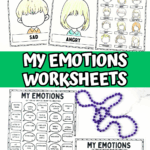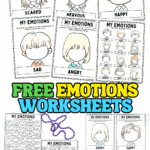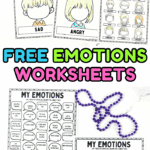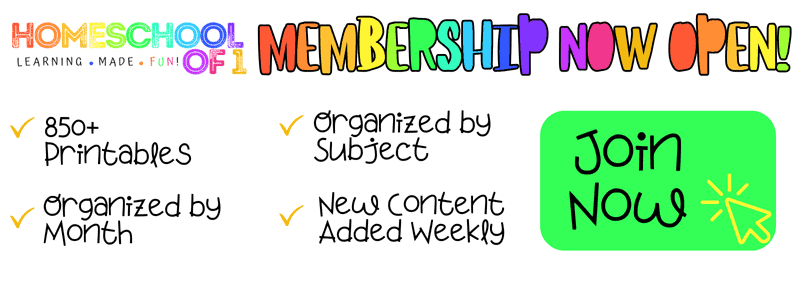Free Emotions Worksheet
One of the most effective tools I’ve used in our homeschool is this emotions worksheet.
When my son was younger, he often had big feelings but didn’t always know how to explain them.
Having a simple, visual way to explore emotions gave him the words he needed to talk about what was going on inside.
This worksheet pack quickly became part of our routine because it’s easy to use, low-prep, and genuinely helps kids build confidence in understanding their own feelings.

**This post may contain affiliate links. As an Amazon Associate and a participant in other affiliate programs, I earn a commission on qualifying purchases.**
Why I Created This Emotions Worksheet
I first put this free worksheet together when I noticed how often my son struggled to put words to his feelings. Sometimes he’d be upset or distracted, and I could tell he needed a way to figure out what he was feeling, and why.
I wanted something simple enough for young kids to use on their own, but also flexible enough to fit into different routines. At home, it works one-on-one during quiet moments, but it’s just as useful for small groups, counseling, or classroom settings.
This 15 page emotions worksheet pack is designed for kids ages 4–8, making it a good fit for preschool, kindergarten, and the early elementary years.
It’s been just as effective in our homeschool as it is for teachers and counselors looking for age-appropriate ways to talk about feelings.
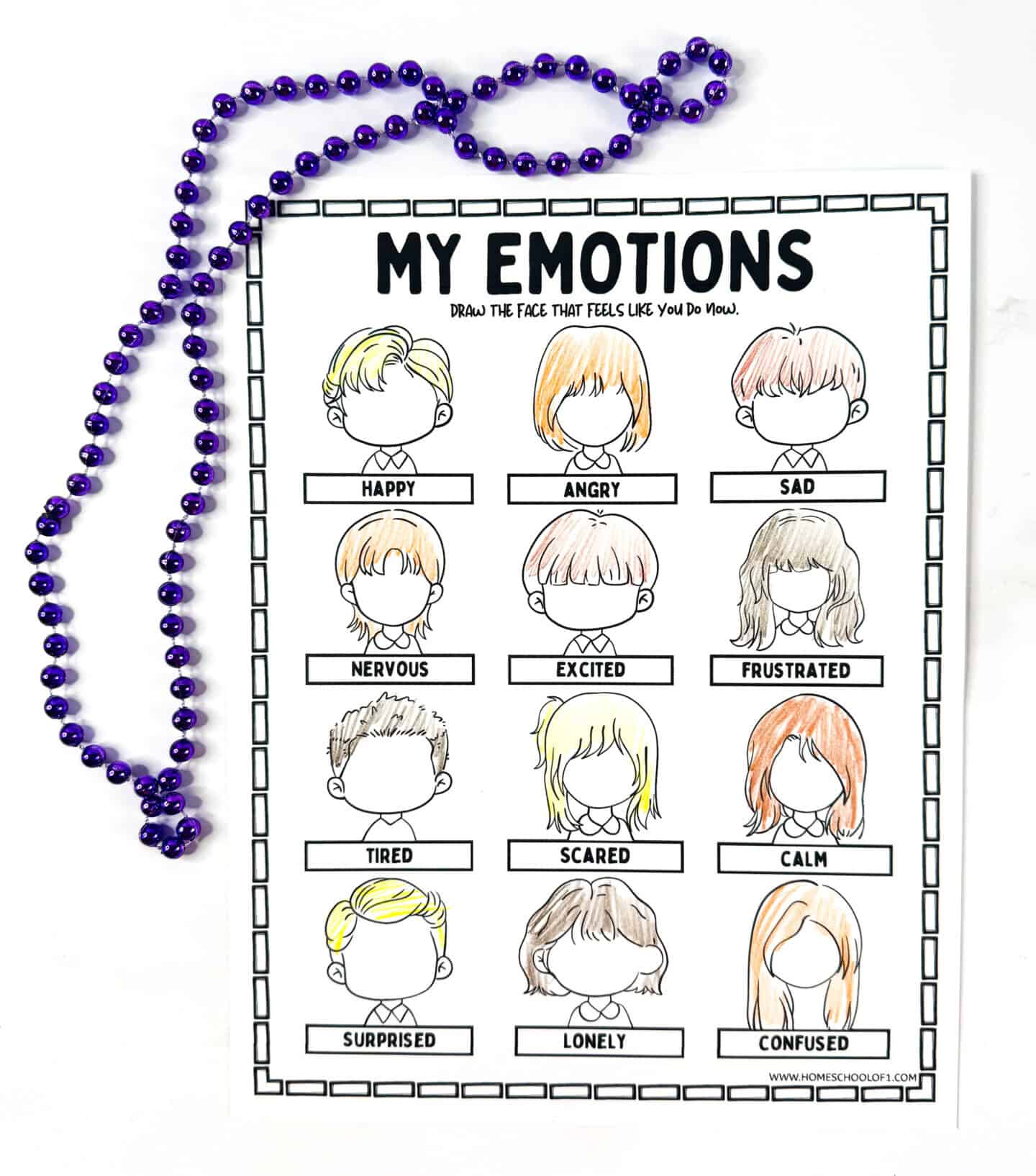
What’s Included in My Emotions Coloring Pages
These free coloring pages include a mix of activities designed to help kids recognize and talk about their feelings in different ways:
- Visual chart of emotions – introduces a variety of feelings like happy, angry, sad, frustrated, scared, nervous, calm, tired, lonely, and more.
- Individual activity pages – kids can draw a face to match the feeling and write or brainstorm what makes them feel that way.
- Cut-and-paste scenarios – two full pages of real-life situations (like getting a hug, not getting picked, going to the doctor) that kids can match to emotions.
These activities are open-ended enough to work for different ages and stages, whether your child is just learning to name basic feelings or ready to talk about more complex ones.
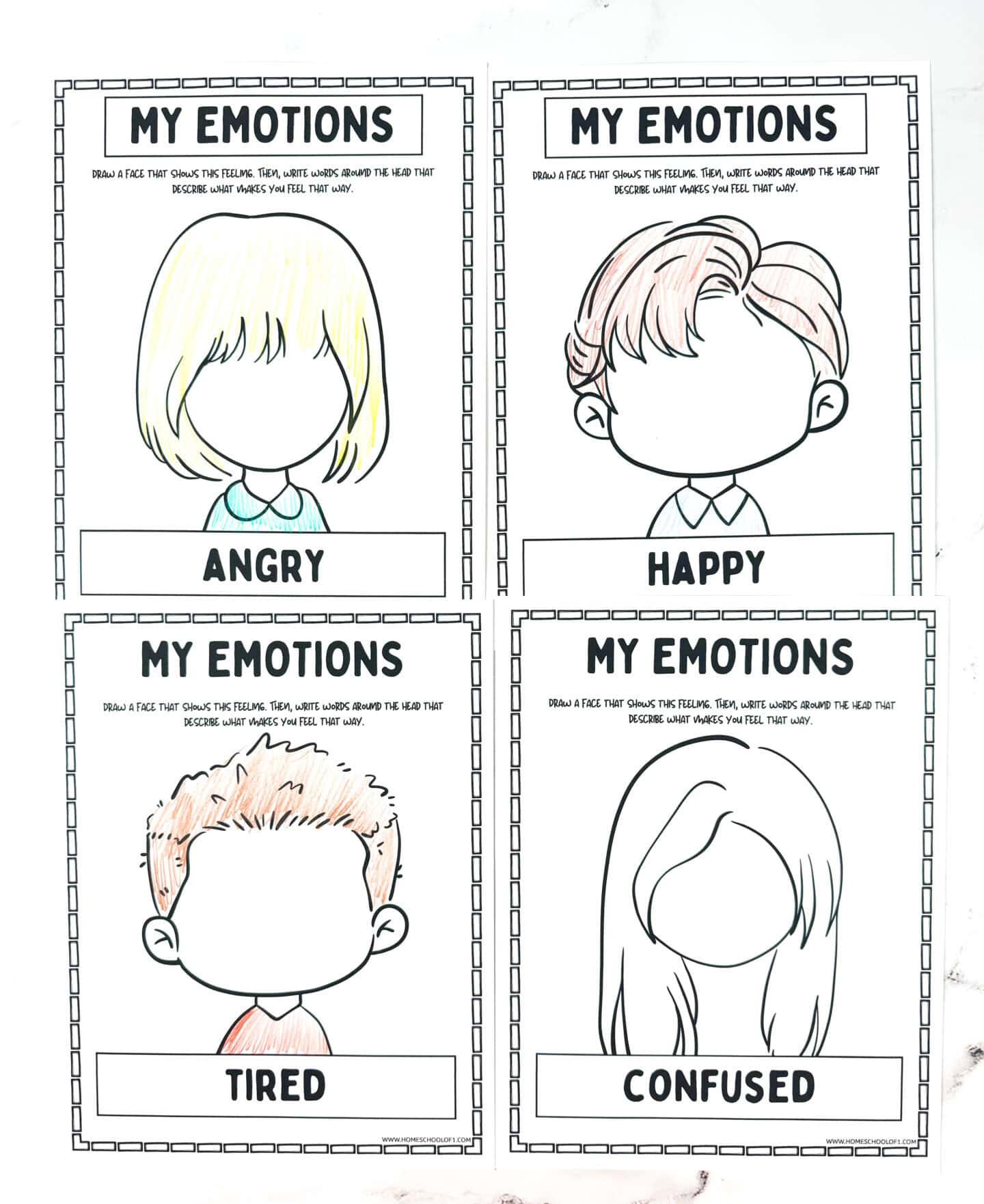
How This Emotions Worksheet Is Being Used
One of the things I like most about this emotions worksheet is how naturally it fits into daily routines.
At home, I often use it during calm moments or right after big feelings, as a way to help my son put words to what he’s experiencing. Sometimes we’ll even complete a page together so he can see that adults have feelings too, and it opens up a good conversation.
In classrooms, teachers use it for morning check-ins, SEL lessons, and calm-down corners. Counselors and small groups also find it helpful because the activities are open-ended and easy to adapt.
Wherever it’s used, the worksheet gives kids a chance to pause, reflect, and better understand their emotions in a way that feels safe and approachable.
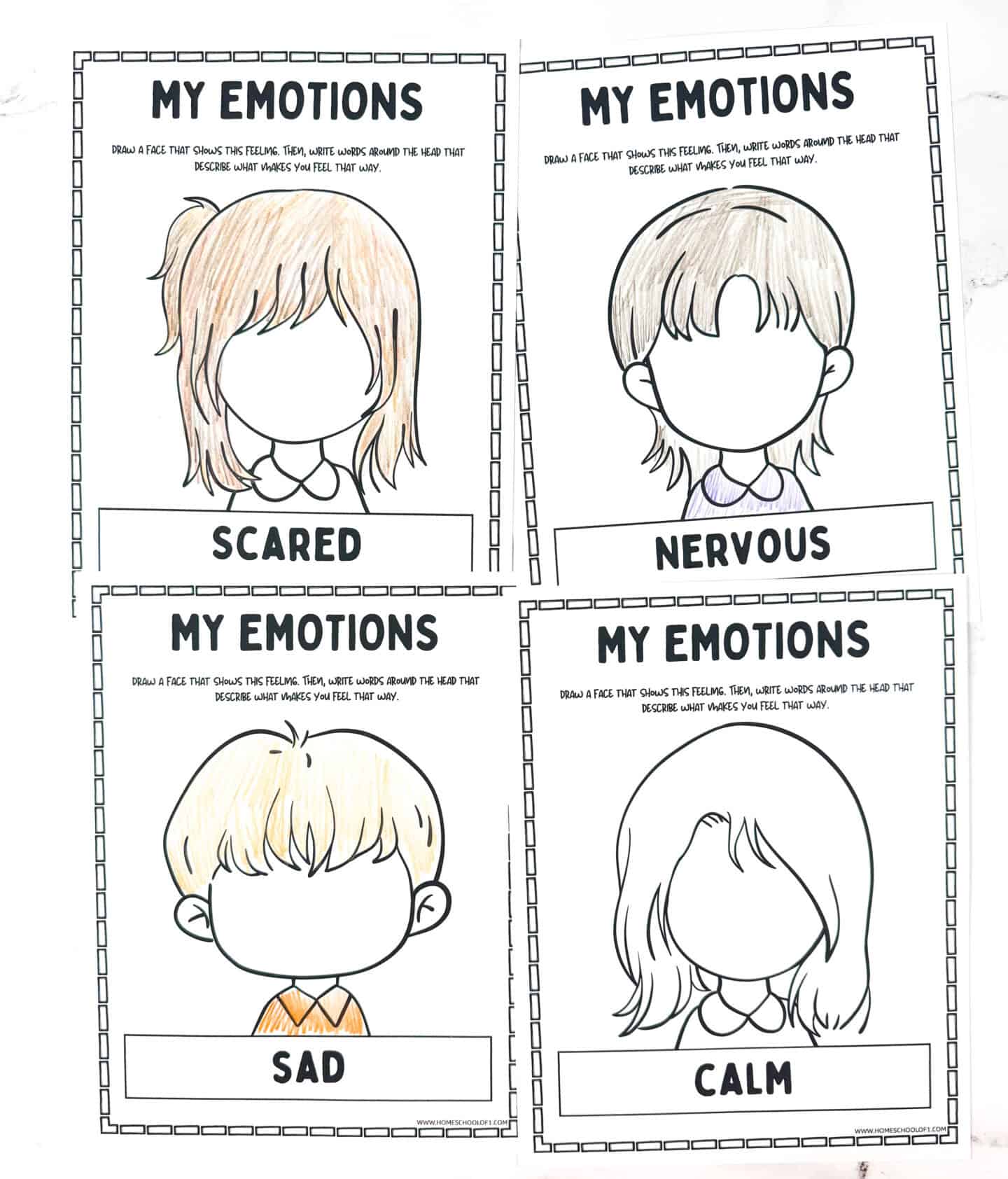
What Kids Learn from Using This Worksheet
The benefits go far beyond coloring or drawing. As kids work through the pack, they begin to build:
- Emotional vocabulary – They learn words that match their feelings, which makes it easier to explain what’s going on inside.
- Emotional regulation – When kids can spot what triggered a feeling, they’re already taking steps toward handling it in healthier ways.
- Empathy – Talking through common situations helps them see that others have the same emotions too.
- Confidence – Because there’s no right or wrong answer, kids feel free to share honestly without the fear of “messing up.”
In our homeschool, I’ve seen these pages spark conversations that never would have happened otherwise, conversations that helped my son calm down faster, problem-solve, and even recognize when a friend might be feeling the same way.
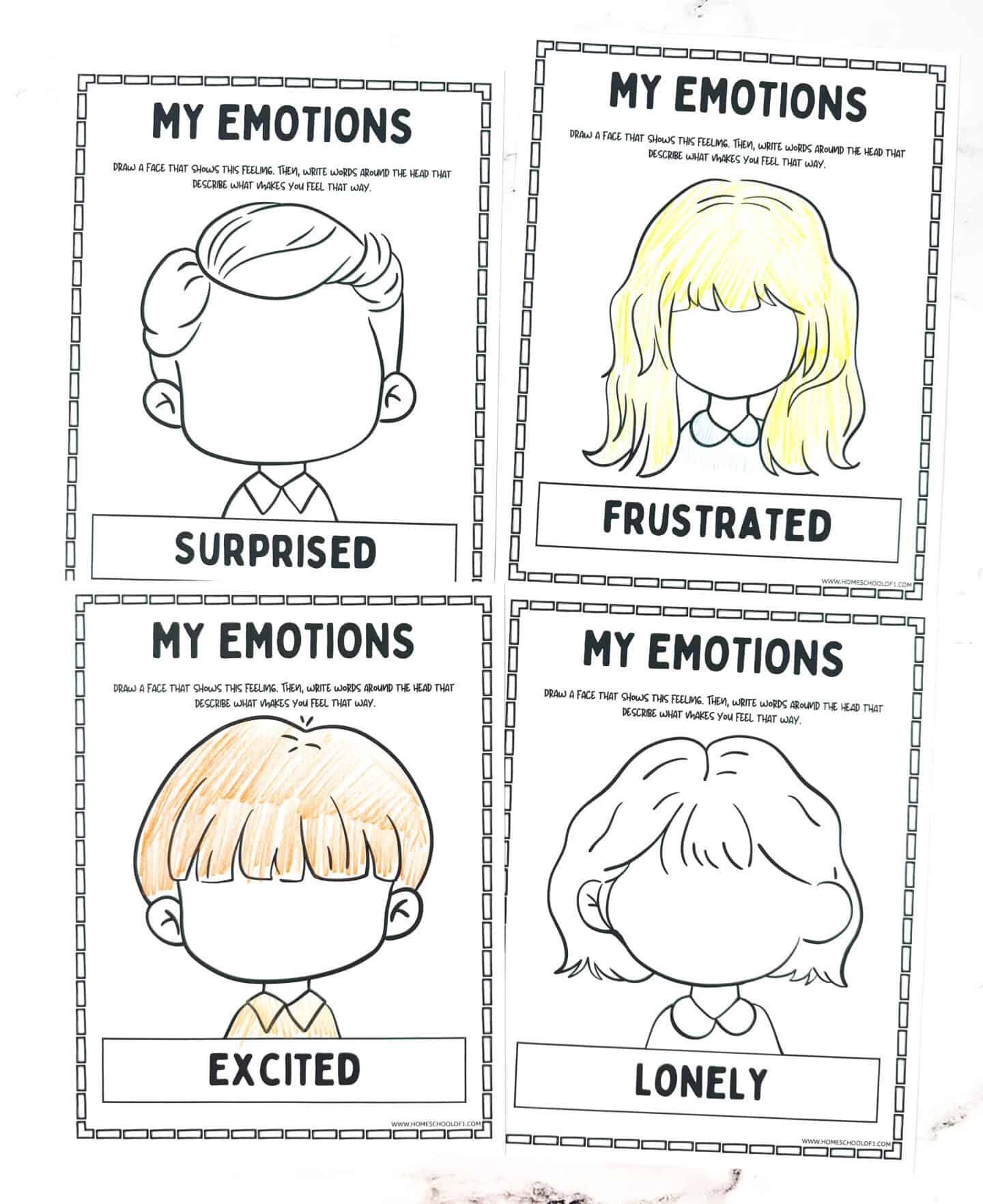
Looking for another fun way to help kids talk about feelings? These emotions color by number printables turn big emotions into a creative, calming activity. As kids color, they practice recognizing different feelings in a way that feels playful and safe.
Tips for Getting the Most Out of the Emotions Worksheet
A few simple tweaks can make this pack even more meaningful:
- Keep it handy – Having a printed copy ready means you can grab it in the moment when feelings come up.
- Offer choice – Let kids pick the emotion they want to work on; ownership makes it more personal.
- Talk it through – After a page is finished, ask open questions like “What made you feel this way?” or “Has a friend ever felt like this too?”
- Make it playful – Use the cut-and-paste scenarios as a matching game or group sorting activity.
- Build a feelings journal – Work through one emotion per week and collect the pages into a growing book of emotions.
What I like most is that it’s low-prep and easy to adapt, you can use it in the middle of a tough moment or as part of a regular routine.
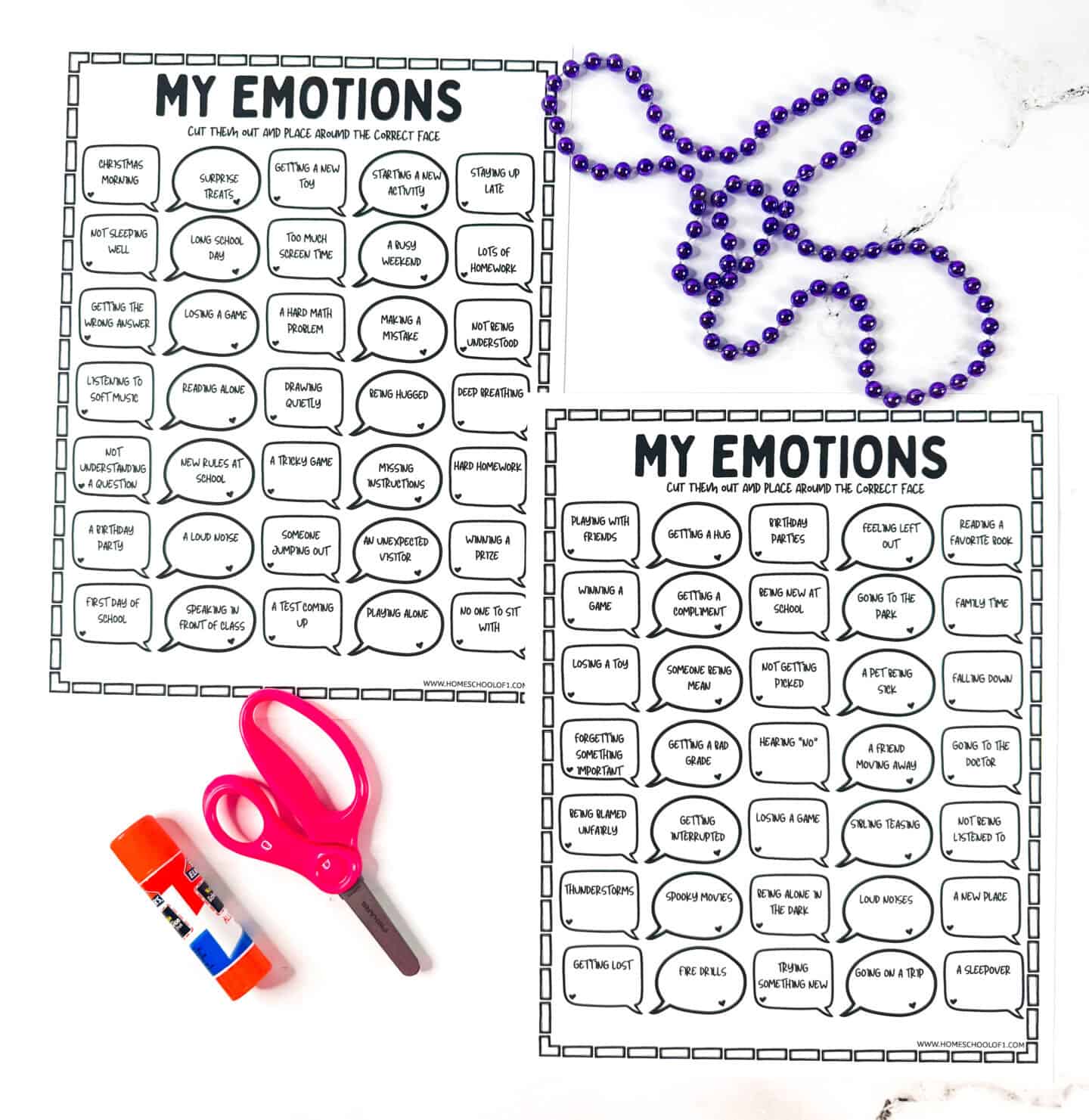
Picture Books to Support Emotional Learning
Pairing the emotions worksheet with the right picture book makes the activities even more powerful. Reading together helps kids see their own feelings reflected in a story, which makes the worksheet pages feel more meaningful. These are a few I’ve used at home with my son that have really helped:
- The Color Monster – My go-to for introducing emotions. The idea of matching colors to feelings is simple but brilliant, and it clicks instantly with younger kids. I often read it right before we start the worksheet.
- Ruby Finds a Worry – A gentle story that normalizes anxiety. I’ve paired it with the “nervous” or “scared” pages, and it reassures kids that worries shrink when we share them.
- In My Heart: A Book of Feelings – Beautifully written and illustrated, this book expands emotional vocabulary in a way children understand. It connects well with any page in the pack.
- When Sophie Gets Angry—Really, Really Angry – Perfect alongside the “angry” or “frustrated” worksheets. It validates the feeling while showing healthy ways to handle it.
You don’t need a huge stack, just choose a book that fits the emotion you’re working on that day. I’ve found even one good story makes the worksheet feel more relatable and sparks great conversations.
Want to explore big ideas like emotions, identity, and values? Take a look at our best philosophy books for kids,.
Get Your Free Feelings Worksheet Here!
If you don’t see the form below, click here to get the free color sheets.
Last Updated on 21 October 2025 by Clare

